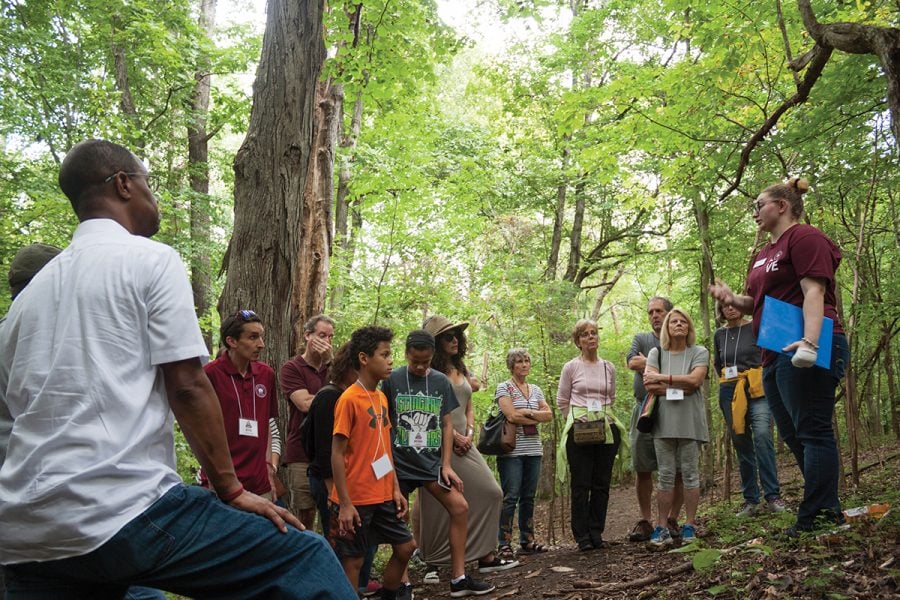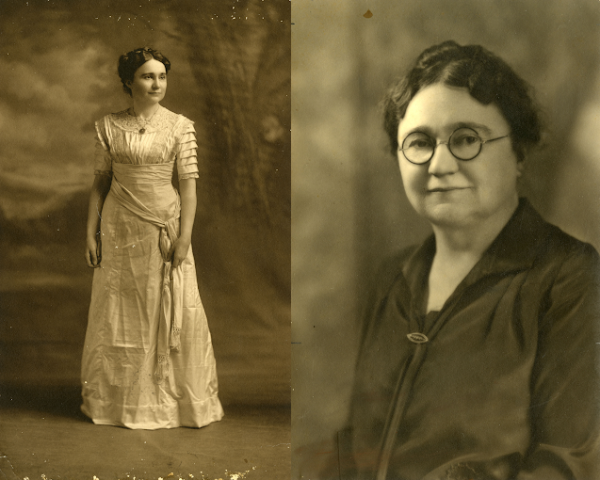Community tours Underground Railroad
Senior Courtney Packer leads members of the community in a tour to the Underground Railroad Tree on Friday, Sept. 28. // Photo By: Jennifer Hwang/The Guilfordian
As the moon lights up the night sky above, John Dimrey, the first fugitive slave of Guilford County to follow the Underground Railroad, moves swiftly through the forest, silent as a mouse, on his quest to freedom. In the darkness, he searches for a smooth tree, feeling the bark against his skin. With his community at his side, Dimrey knew freedom was just within reach.
As part of Guilford’s homecoming weekend celebration on Friday, Sept. 28 and Saturday, Sept. 29, two Guilford faculty members gave tours through the Guilford College woods as a commemoration of the Underground Railroad. This vast network of routes has become a central part of Guilford’s history of social justice and refuge, and the tours aimed to bring the history back to Guilford.
“I believe this Underground Railroad was among the first social justice movements in our country,” said tour guide James Shields, who is the director of the Bonner Center for Community Service and Learning.
The Underground Railroad was an organized system of routes, houses and people who helped fugitive slaves find freedom in the north and in Canada after escaping from their slave owners. In North Carolina, the Religious Society of Friends, better known as the Quakers, fiercely opposed slavery. One of the members, Levi Coffin, assisted over 3,000 slaves escape to freedom starting at the age of 15.
While the dense forest and wide-open trail are engaging to walk through, the true focal point of the tour is the 300-year-old tulip poplar tree known as the Underground Railroad Tree.
“This tree was a witness to those enslaved Africans that came here seeking freedom,” Shields said. “To those friends, those members of the Religious Society of Friends, who came together and said we need to organize. We need to help these people. We need to live up to our testimony.”
The tree and the Underground Railroad itself have become a symbol of integrity, one of Guilford’s core values, and continues to connect the campus to its Quaker roots and its dedication to social justice.
Many attendees of the tour, including 1993 Guilford alum Kelly Hannum, found parallels between Guilford and the story of the Underground Railroad.
“I think the notion of social justice is important,” Hannum said. “Kind of knowing what you stand for and being willing to take some risks, make some sacrifices to create a positive change. I think the Every Campus a Refuge work is kind of connected. Different reasons, different people, but they have the same sort of idea.”
After Guilford received a grant from the Tannenbaum-Sternberger Foundation in 2017, they were able to both create a trail in the Guilford College Woods and develop a curriculum about the story to teach in classrooms around North Carolina.
Because the Underground Railroad’s history is integral to the Guilford community, history teachers have incorporated it into their curriculums to ensure it is never forgotten.
Attendee Keith Erickson, father of a 2016 Early College graduate, remembered his son taking the same tour.
“I’ve heard of the tree, but this is the first time I’ve seen it. I think I remember when my son, Dylan Erickson, went on a tour with Max Carter, the Quaker historian,” Erikson said.
As the tour came to a close, Shields made sure to remind everyone of the purpose and significance of the Underground Railroad to Guilford.
“The Underground Railroad is a story about living up to your values, having values, developing values and then living up to them,” said Shields. “This is just the beginning, the beginning of what we know is a legacy, not just for Quakers but for this school. We have a rich history of social justice here and that’s why it’s important to tell this story.”









